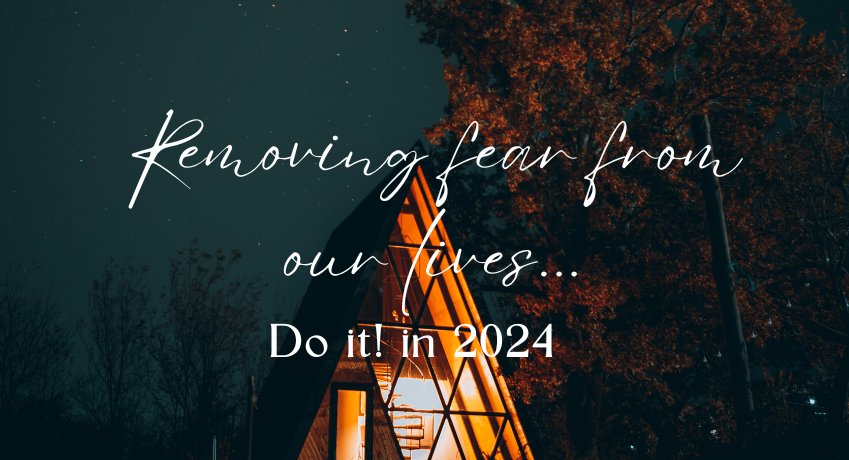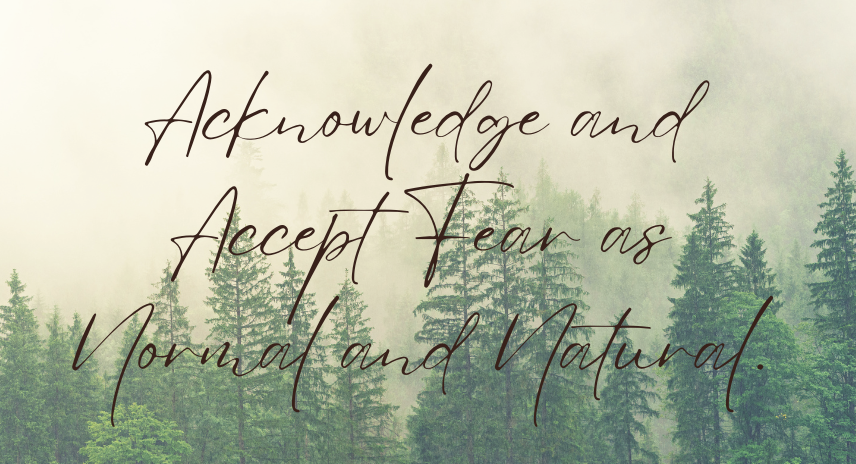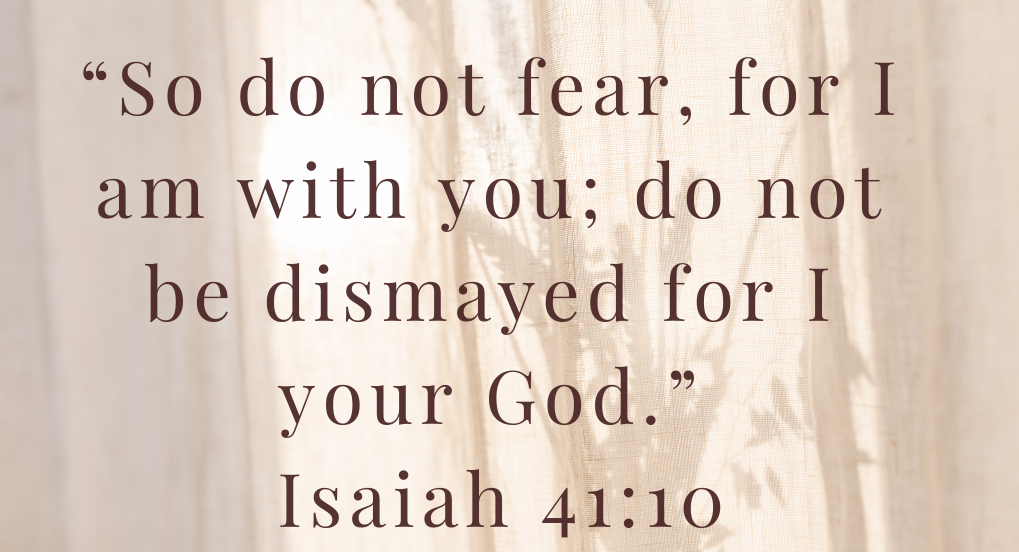Removing fear from our lives… Do it! in 2023
- Rick J Petronella PhD
- Jan, 16, 2024
- Uncategorized
- No Comments
Dr. Rick Petronella

January 2024 Newsletter
Removing fear from our lives… Do it! in 2023
The new year is an interesting time because, for a brief moment, we have a clean slate starting out. This makes way for hope. All the uncertainties we have about ourselves and others come to a brief halt, and we can acknowledge that having another year together is something we can celebrate, not fear. If we are able to remove fear from our lives, what could actually happen?
Fear is a feeling that nobody wants to experience, but it often persists as an underlying emotion in our lives. However, by learning to accept and understand fear, we can become less susceptible to anxiety.
Fear is something that can be contextualized. It is how we frame our situation and how we choose to approach life and its challenges. It can bind us up or empower us to take on the challenges we face.

It is often the first emotion that strikes us, and life is about continuously navigating the residue of that impact. Much of what we do in our day-to-day lives is to mitigate fear, mostly as a means to reduce uncertainty. We set up to-do lists so we can approach tomorrow with intention. We build habits so we can anchor our attention in the wake of chaos. This is our attempt to ground ourselves in something reliable, something we can predict that gives us a sense of calm and hope.

It is completely normal to be afraid of things that may never happen. We all do it! But sometimes we might focus so much on the fears that we miss the opportunities around the fears. The Greek word for fear is phobos, which means to be paralyzed. When we allow fear into our lives, we become paralyzed. So, it’s important to be open to fear and not just concentrate on what we’re afraid of. And when we can keep an open mind and won’t get too fixated on the fear.
The problem, however, is that anytime we look to the future or revisit the past, we reintroduce fear. When using the future as your lens, fear takes the form of expectations. When using the past as your lens, fear takes the form of rumination and often shame.
Fear is that primal emotion deeply embedded in our human psyche, and it can either consume us or be a powerful force. It has the potential to keep us safe from danger, alert us to threats, and heighten our senses in times of need. Yet, fear can also be a limiting factor, holding us back from realizing our dreams, taking risks, and embracing opportunities for growth.
We can rethink fear, change our attitude towards it, and transform it from a paralyzing obstacle into a catalyst for meaningful change. I hope you have a simple yet profound toolkit to confront and conquer fear.

Understanding Fear
Before we dive into strategies for rethinking fear, it’s essential to understand what fear is and why it exists. Fear is a natural, hardwired response to perceived threats. It triggers a complex chain of physiological and psychological reactions, preparing us to either confront or flee from danger. This “fight or flight” response has been essential to human survival throughout history.
However, many of the threats early man faced no longer exist in the modern world. Instead, fear often manifests in response to more abstract or psychological challenges — like fear of failure, rejection, or the unknown. While these fears are less immediate than facing a wild animal, they can be as potent and influential in our lives. These are modern-day fears, which are often exacerbated through social media and news to make us feel unsettled about our future.
Fear becomes a problem when it paralyzes us, preventing us from pursuing our goals and dreams. It can lead to missed opportunities, never realizing our full potential and a life confined to our comfort zones. Fear can manifest in various ways.

Here are some ways that fear can show itself in our lives. Maybe you can recognize some of these –
Procrastination: Fear of failure or inadequacy can cause procrastination, as we delay taking action to avoid confronting our fears.
Self-Doubt: Fear often leads to self-doubt, making us question our abilities and worthiness.
Avoidance: We might avoid situations, people, or experiences that trigger our fears, limiting our exposure to new opportunities.
Negative Self-Talk: Fear can fuel negative self-talk, as we engage in self-sabotaging thoughts and beliefs.
Physical Symptoms: Fear can manifest as physical symptoms like anxiety, tension, or even panic attacks.
Do you recognize any of those you have just read about? I can virtually click every box.
Rethinking Fear: Changing Your Attitude
To transform fear into a catalyst for positive change, you need to change your attitude towards it. Here’s how you might try to achieve results for yourself. Remember, there is no magic cure. All methods for change require time and effort. No one can do this work for you. You must experience the change yourself. This takes courage, but you are already making progress by taking that first step.

The first step is to acknowledge and accept that fear is a natural part of life. It’s not a sign of weakness or inadequacy; it’s a human response to challenges and uncertainties. By recognizing fear, you can begin to address it. Rather than viewing fear as a purely negative emotion, consider its positive aspects. Fear can heighten your awareness, sharpen your focus, and motivate you to prepare for challenges. It’s a signal that something significant is at stake.
Instead of seeing fear as an insurmountable obstacle, reframe it as a challenge to overcome. Just as you would tackle a difficult task or conquer a mountain, approach fear with a mindset of determination and growth. Take time to explore the root causes of your fear. Understanding why you’re afraid can help you address the underlying issues and develop strategies to cope. Your fears and why they exist will be different than other people’s experiences. Sometimes, you have to be ready to tackle deeply ingrained fears by seeing a professional. It pays dividends to do the work required.
Don’t hesitate to seek support from friends, family, or a therapist as mentioned earlier, when dealing with fear. Sharing your fears with others can provide emotional support and different perspectives. Meaningful meditation and relaxation techniques can help you manage the physical symptoms of fear, such as anxiety and tension. They promote calm and emotional resilience. This is a really good strategy to help if you feel a panic attack coming on — always bring yourself back to the present moment. Concentrate on looking at your surroundings: What can you see? What can you hear? Are you really under threat right now?

Remember that failure is a natural part of life, and it can be a valuable teacher. Embrace failures as opportunities for growth and learning rather than as reasons to fear. Now that you’ve shifted your attitude towards fear, it’s time to harness its transformative power.
Here are a few ways to think about achieving that –
Courage is not the absence of fear but the willingness to act despite it. As you confront your fears, you’ll cultivate courage which will empower you to take risks and pursue your goals. Actively seek out experiences and challenges that take you outside your comfort zone. Life is always full of unknowns, and fearing the unknown can hold you back. Embrace uncertainty as a natural part of the human experience and an opportunity for growth.
Confronting fear teaches you adaptability. You learn to adjust to new situations, pivot when necessary, and find creative solutions to challenges. Resilience is the ability to bounce back from adversity; facing fear head-on can enhance your resilience. It teaches you to persevere and find strength in difficult circumstances. Each time you successfully confront a fear, your confidence grows. Over time, this increased self-assurance can profoundly impact your life and the risks you’re willing to take.
Fear is a natural and powerful emotion that doesn’t have to be your adversary.
By changing your attitude towards fear, acknowledging its positive aspects, and taking proactive steps to confront it, you can transform fear into a catalyst for positive change. Embrace your fears as opportunities for growth, and you’ll discover that they have the potential to propel you toward a more fulfilling and empowered life. Remember, it’s not about the absence of fear but the courage to act despite it that truly matters.
God assures us in the scriptures not to fear. Remember, you do not have to do life alone.

Quiz: How Well Do You Handle Your Inner Critic?
Most of us have an Inner Critic, an internal “voice” that judges our actions or inaction and tells us what’s wrong with us and how we should or should not be. This constant judgment can lead to debilitating feelings of guilt, shame, and anxiety. While it’s difficult to silence the critic completely, there are ways to cope with it. Answer these true/false questions to discover how well you handle your Inner Critic.
Set 1
1. I can’t seem to do anything right. I feel depressed and incapacitated by the constant nagging, judging voice inside me.
2. I don’t necessarily realize I’m at the effect of my Inner Critic, but I often compare myself to others and never quite measure up. I feel inadequate.
3. Just when I’m about to embark on something new and exciting, such as a job or relationship, my Inner Critic kicks up doubt and fear to prevent me from pursuing the opportunity.
4. I have difficulty staying in the present moment because my internal judging voice loudly intrudes, dictating what I should and shouldn’t do.
5. Because of that voice, I second-guess my choices and actions and don’t trust myself. As a result, I worry that I’ll make a big mistake and something bad will happen.
Set 2
1. I see my Inner Critic as a misguided ally who wants to help or protect me. I look for the positive intention behind what it says and embrace that rather than the negative message.
2. I’ve gotten to know the themes my Inner Critic harps on, so I can distinguish those voices from other more useful internal dialogue.
3. It’s helpful to notice when my Inner Critic is present. I breathe deeply and center myself to release fear and anxiety and return to a more peaceful place.
4. Giving my critical inner voices funny names and descriptions —such as Taskmonster or Paula Perfectionist—helps me diminish their power and not take them seriously.
5. As I’ve become skilled at handling the Inner Critic, it bothers me less often. I still hear it sometimes, but I don’t believe what it says and it rarely affects me adversely.
If you answered true more often in Set 1 and false more often in Set 2, you may wish to learn some effective ways to handle your Inner Critic. Please call if you’d like support in exploring this further.
If you’d like support doing this, please don’t hesitate to call: 678-395-7922
